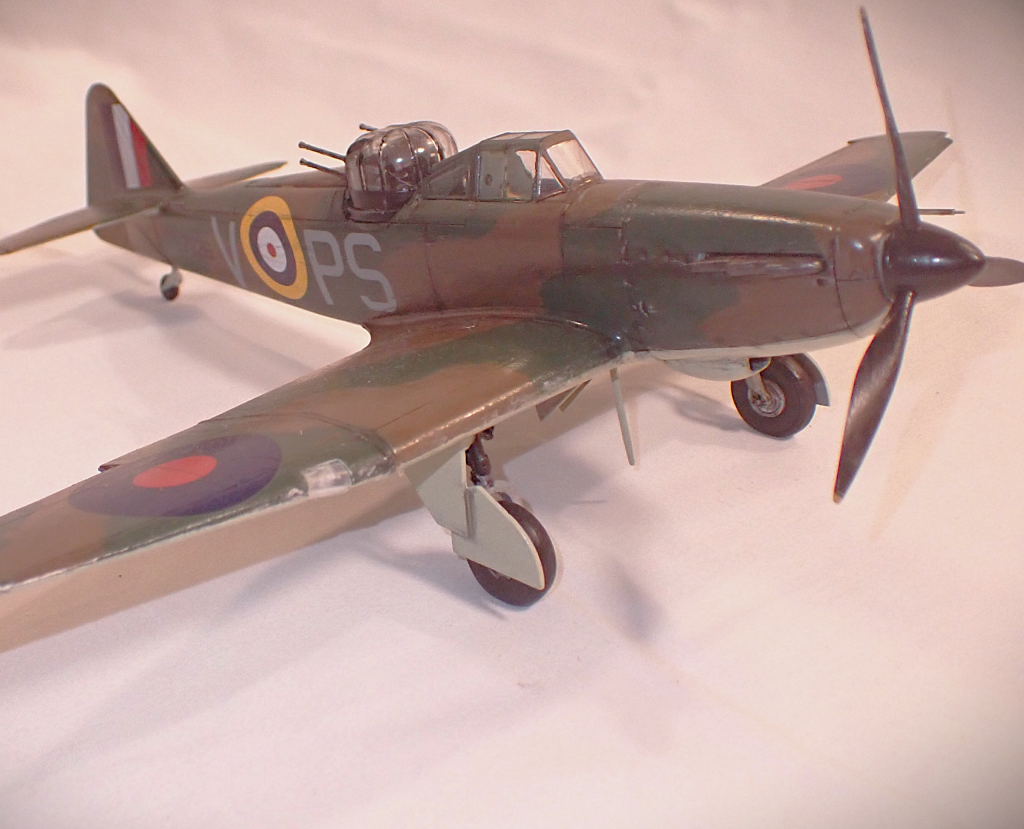The Boulton Paul Defiant is a single engine interceptor designed as a fighter to combat enemy bombers. It was unusual in having a dorsal turret installed in the rear cockpit giving it the capability for a high field of fire. It was powered by the Rolls-Royce Merlin engine but suffered performance-wise, like the Fairey Battle, due to its size and weight. It was armed with four Browning .303 machine guns, each with 600 rounds, in a ‘Type A’ electro-hydraulically powered turret.
The concept of a turret fighter was born from the ever-increasing threat of war as a requirement by the RAF for a capable interceptor to defend against the expected hoard of German bombers. It was not expected that the bombers would be escorted as it was out of range for the German fighters. However, with the fall of France many German air groups relocated and became very much within range of British air space. Consequently, the Defiant, although very capable in shooting down enemy bombers, was no match for the faster and nimbler Messerschmidt Bf109. At first the German pilots mistook the Defiant for Hurricanes and attacks on the rear of the Defiant were often disastrous with the four Browning .303 machine guns scoring many hits. The German pilots changed tactic and used frontal attacks or from underneath where the guns could not harm them and Defiant losses began to mount considerably. During the Battle of Britain, the Defiant had a high kill ratio shooting down many bombers and fighters. It was also very effective as a night fighter from July 1940, with huge success during the Blitz. After high losses throughout July and August 1940 during daytime operations, the Defiant was used for night fighter roles only. They were eventually equipped with aircraft spotting radar which greatly improved their capability until the type was superseded in 1942 by the Beaufighter and Mosquito. Despite scoring many kills the type suffered many losses being withdrawn from frontline service in early 1942 and used in training roles and target tug duties until it was retired at the end of the war. Some were used for air sea rescue but were deemed unsuitable after only a few months. A few were used as test beds for engines, guns and ejector seats up until 1948.
Of the 1064 Defiants produced only one survives to this day, N1671 at the RAF museum in Cosford, Shropshire, UK, a photo of this aircraft is included in the gallery.
